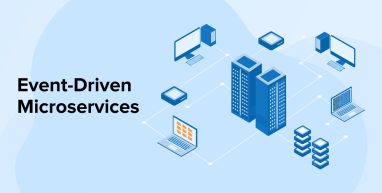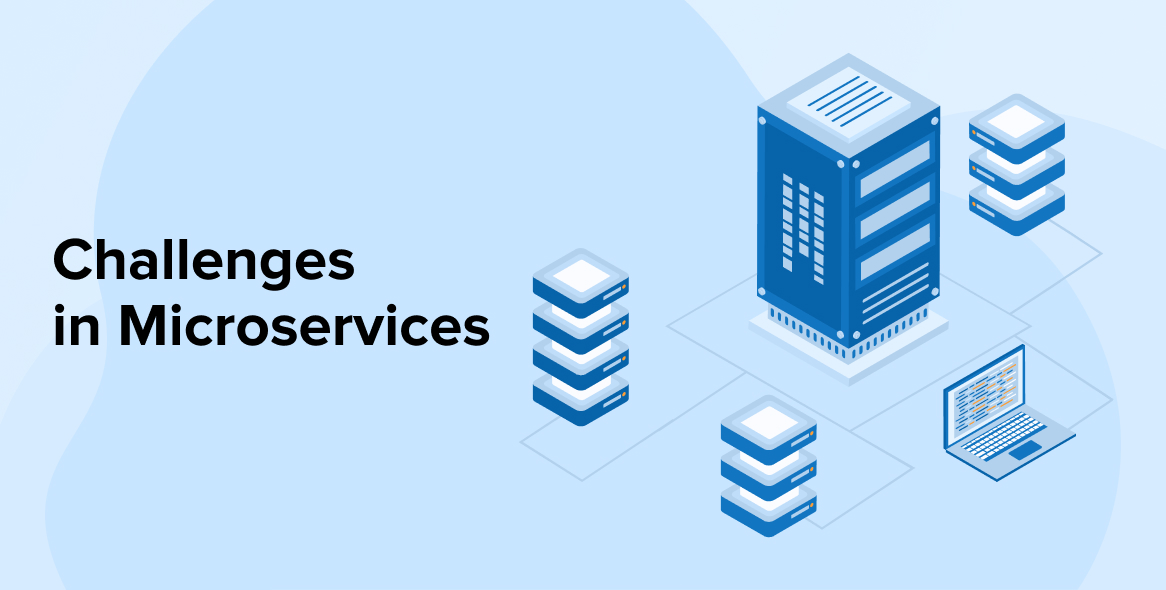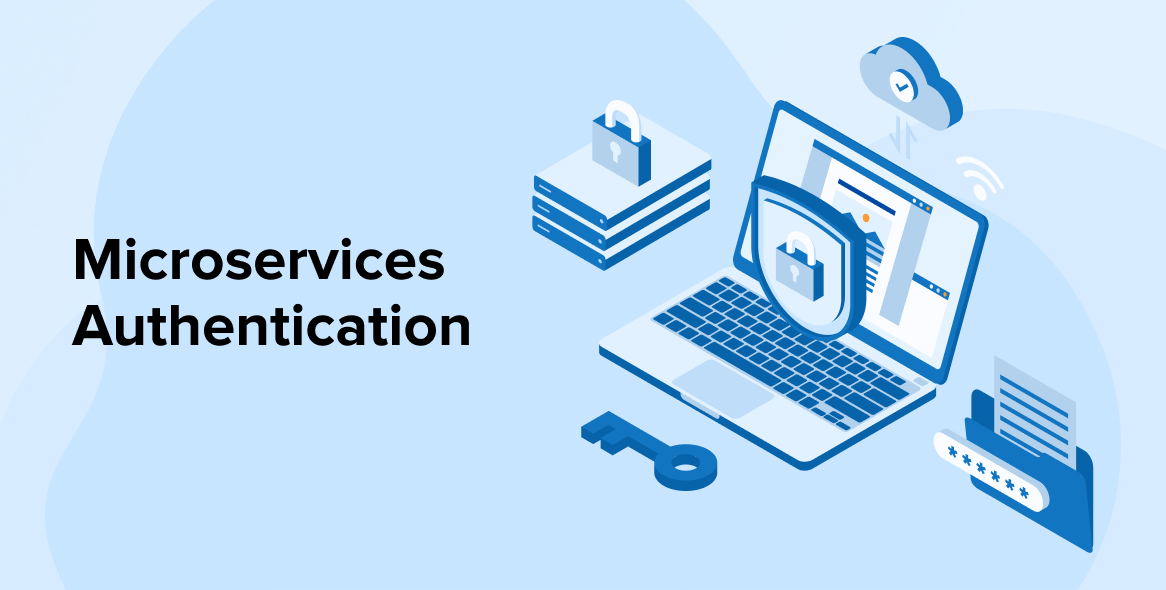
Microservices and event-driven architecture are different. Both are very beneficial when used differently. But what if you integrate them? The combined use of both architectures allows you to maximize your organizational data as well as increase the efficiency of all your business operations within the system. Highly reputed software development companies leverage this Event-driven microservices architecture to deliver resilient and scalable applications. Combining them can be a little complicated, and you might face some challenges along the way.
You can ensure that the finished product meets the requirements by implementing relevant architectural patterns. This article discusses everything you need to know to get started with the event-driven architecture pattern.
1. What is Event-Driven Microservice Architecture?

The Event-driven microservices architecture is a software development model. The events in this architecture can represent any kind of state changes, they may carry the state itself or simply serve as identifiers. These events trigger the loosely coupled microservices and start communication between them.
The three primary components of an event-driven architecture are event producers, event routers, and event consumers. Whenever an event occurs, the component that tracks and publishes them to the router is called the event producer.
The event router analyzes those events and decides where to send them next. The responsibility of handling and processing the events along with completing the action falls upon the event consumer.
2. Benefits of EDM Architecture

Nowadays, more and more development teams are adopting the event-driven microservices architecture to build software applications. This is due to the multitude of benefits that effective utilization of the architecture offers. Some of them are listed below:
2.1 Improved and Independent Scaling
Applications built upon event-driven microservices architecture are easy to scale. Since all the microservices are built independently and each service focuses on a single functionality, you can scale the app component by component.
This is easy in comparison to scaling the traditional monolithic application. The event router effectively manages workload surges by acting as an elastic buffer between microservices. And even if any service fails, it wouldn’t impact the functionality of the remaining parts of the application.
Further Reading on: Monolithic vs Microservices
2.2 Loose Coupling Gives Flexible and Failure-Proof Architecture
Event-driven architectures follow microservices which are loosely coupled to each other. This means that services aren’t dependent on each other. They are developed independently. It makes the architecture flexible to changes or adjustments. More importantly, it becomes failure-proof as the failure of one service doesn’t affect the functioning of the rest of the application.
2.3 Rapid Development
An event-driven microservices architecture allows you to automate many mundane tasks like polling, filtering, and routing events. Moreover, it handles the coordination between the event producer and the event consumer. This not only helps increase efficiency but also speeds up the software development process.
2.4 Asynchronous Functionality Helps Make Quick Decisions
Event-driven architectures don’t need blocking to be asynchronous. It allows resources to move freely from one task to another without restrictions. It enables you to create apps that meet your requirements because it doesn’t follow a linear approach to software development.
When an event occurs, it triggers the communication between microservices. Their asynchronous communication maintains data consistency. This also helps speed up the in-event decision process. It only takes mere milliseconds for an optimized tech stack to make a decision.
2.5 Easy Audit
The event router audits your app and defines the policies on who can subscribe or publish on the router. It also regulates access to data for users. It doesn’t matter if your event is at rest or in transit, the event router can easily encrypt it.
2.6 Real-Time Processing and Analytics
The efficiency of your systems improves as the event-driven architecture allows you to capture and process events in real time. Event-driven systems support self-documenting. This means that all the events are recorded and then immediately broadcasted to the receivers to deliver real-time analytics on the recorded events.
2.7 Data Recovery
As we saw, all events are recorded in the event-driven architecture. This allows the replay of past events, preventing the loss of valuable data. The architecture provides built-in tools that allow you to replay the events and recover the lost data.
2.8 Low Costs
Because event-driven architecture follows an on-demand approach, microservices are activated only after the occurrence of certain events. This approach enables companies to avoid setting up extra infrastructure or paying for unnecessary services. The event-driven architecture allows them to utilize network bandwidth, CPU, memory storage, and more as required. This helps them cut back on costs significantly.
3. How Does Event-Driven Microservices Architecture Work?
The workflow of the Event-driven Microservices architecture consists of the following stages:
3.1 Publish/Subscribe (Pub/Sub) Messaging
Both serverless and microservices architectures utilize Pub/sub messaging for asynchronous communication. It sends a message to every subscriber when an event is generated or published. The new subscribers can’t see the event and the message is not repeated once received.
Besides verifying the legitimacy of the publisher, subscribers don’t require additional information. Similarly, the publisher only needs to know that the subscriber is entitled to receive information and nothing more.
3.2 Event Source
The event processing system receives the event from the event source. There can be one or more event sources and it can send events to one or more event processors.
3.3 Event Processor
After receiving the events, the processor can take different actions such as enriching the event which is an example of simple event processing. In complex event processing, multiple events come from multiple sources.
Here, the event processor has to add information about the event sources and match them with event patterns to create a new compound event. The complexity and the sophistication of the events are the deciding factors to categorize them for processing.
3.4 Event Consumer
The event consumer consumes the event. It ranges from anything simple like updating the database to something complex like running a new business process.
4. Patterns of Event-Driven Architectures in Microservices
To build event-driven microservices, you need to use some suitable architectural patterns. They determine how producers, routers, and consumers should work. Some of these architectural patterns are mentioned below:
4.1 Publisher/Subscriber Architecture
The architectural pattern for tracking subscriptions from consumers to event channels using an event router is called a Publisher/Subscriber, commonly known as Pub/Sub architecture. It is the responsibility of the router to ensure that the subscriber receives the event after it is published. However, the subscriber can’t access or replay the events from an event stream.
4.2 Event Streaming Architecture Pattern
This architecture pattern, when used with a messaging tool, helps publish a stream of events to a broker. Event streaming logs all the events and allows consumers to access and consume the events from the streams.
The event consumers can read and replay any past events as well as, identify relevant events from the logs. Event streaming architecture processes the events asynchronously in real time. This allows the software components to integrate and scale in real time whenever the need arises.
4.3 Event Sourcing Pattern
If you are migrating from monolithic architecture to microservices then event sourcing is the perfect pattern for you to use. It never updates or deletes data directly. Instead, it determines a state with a series of events.
Event sourcing is helpful in the easy implementation of atomic transactions, distinct data stores, and loosely coupled services. This architectural pattern presents the events in the order they were received.
4.4 Polyglot Persistence Strategy
Polyglot persistence means the coexistence of various storage formats. If you are using a heterogeneous database, polyglot persistence allows you to save your data in various databases. It leverages the microservices architecture to store your data in a separate service.
4.5 CQRS
In event sourcing when a state has to be built using a series of events, it gives way to issues like slow and complex queries. CQRS is an architectural pattern that provides different services to query the data.
It also separates the read and write models in the app. This means that different services will handle the insert or update operations. As a design solution, the Command Query Responsibility Segregation pattern delivers improved scalability, security, and performance.
5. Challenges of EDM
When you are working with event-driven microservices architecture for software development, you can face some challenges such as:
5.1 Data Accessibility and Consistency Issues
Each microservice controls its data. This makes the data stored in the microservices exclusive to it. Other microservices need to use APIs to access the data. But when multiple services try to access the same data, things can get complicated.
Although using Polyglot persistence provides efficiency and scalability, it also brings distributed data management issues to the table. So, if you want to run any business operation across multiple services then it becomes difficult to maintain the integrity of the data.
This issue of data consistency isn’t typically encountered in traditional architectures. Unlike event-driven architecture which has a heterogeneous database, monolithic architecture comes with a single database.
5.2 Performance
The event-driven architecture consists of a broker between the event producer and the event consumer. Moreover, consumers need to balance the tradeoff between event transmission and sending more concise notifications by incorporating extra data.
The need for additional logic stretches out the transmission time which eventually prolongs the event execution. As a result, the app’s performance is degraded.
5.3 Complexity
Working with EDA is complex especially if you are migrating from monolithic to microservices architecture. Because it is granular, you have to take everything apart piece by piece to get a close view of the business processes and solutions.
Another reason why developers think EDA is complex is because sometimes it needs to grasp the critical aspects of the business operations. It compels developers to start from the ground up to deliver a functional and efficient solution for business operations.
Additionally, due to decoupling in microservices, it becomes difficult to track the status of the events between various apps. Because they neither have any clearly defined relationships nor any direct dependencies.
5.4 Eventual Consistency
Depending on multiple factors like the time it takes to execute tasks, two or more services can react to the same event and process it at different times. Therefore, it doesn’t matter if every service doesn’t have the same reaction time to an event because eventually, all services would process the event at their own time. Such a phenomenon is called eventual consistency.
5.5 Security
Although there are many security benefits to having a decentralized architecture, there are some risks as well. Every new producer and consumer added to the architecture becomes a potential vulnerability.
Moreover, each component has access to the data generated in the system. If you don’t have adequate restrictions in place, then your data or system can easily get compromised. This problem is only going to get worse as the architecture grows.
6. Conclusion
Event-driven microservices architecture is a system where every service is independent and yet connected. It allows workflow systems, data streams, and complex transactions in real time. Developers can use it to create fast and scalable applications. After all, it is deemed one of the most efficient and cost-effective approaches to software development.






Comments
Leave a message...